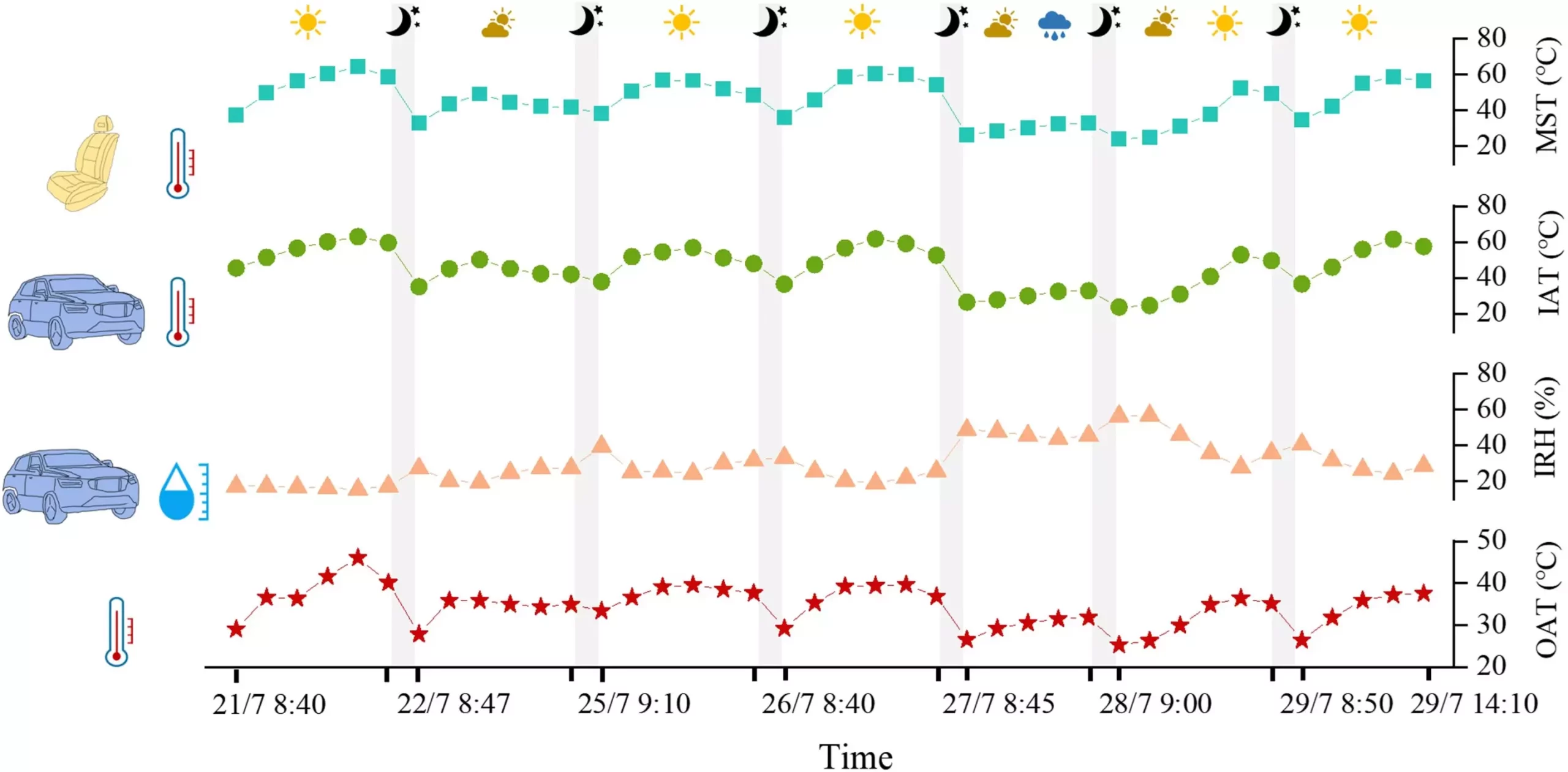The allure of a “new car smell” resonates with many car buyers, evoking feelings of luxury, freshness, and a sense of ownership. However, beneath this seductive scent lies a potentially hazardous cocktail of volatile organic compounds (VOCs) that can pose serious health risks. A recent study sheds light on the alarming concentrations of these compounds, particularly formaldehyde and other aldehydes, in new vehicles exposed to elevated temperatures on scorching summer days.
Research conducted by Jianyin Xiong, Shaodan Huang, and their team reveals that VOCs emitted from interior materials such as carpets, upholstery, and adhesives can create a toxic atmosphere within new cars—especially when external temperatures surge. The findings highlight an urgent need for consumers to understand the health implications tied to their cherished new-car aroma.
Temperature Amplifies VOC Emissions
The study’s data collected during sweltering summer temperatures, ranging from 25.3 °C to 46.1 °C (77.5 °F to 115 °F), showcases strikingly high levels of formaldehyde, acetaldehyde, and hexaldehyde in most modern vehicles. Formaldehyde, a known carcinogen, was notably detected at concentrations exceeding 200 µg/m³, far surpassing China’s national safety limit of 100 µg/m³. Similarly, acetaldehyde levels reached as high as 140 µg/m³, while the national threshold stands at just 50 µg/m³. These figures suggest that consumers might unknowingly be sealing themselves in their own vehicles, accompanied by an invisible threat.
The increasing global temperatures driven by climate change will likely worsen these conditions, making it essential for manufacturers and regulators to address this chemical problem decisively. The results compel us to question whether the automotive industry is doing enough to protect consumers from the hidden dangers that accompany new vehicular purchases.
Utilizing Innovation to Combat Toxicity
To tackle this pressing issue, the research team developed a sophisticated deep learning model capable of predicting in-cabin VOC concentrations. Their innovative approach highlights material surface temperatures as a crucial variable influencing VOC levels. By integrating such predictive technologies into vehicle control systems, automakers could proactively address indoor air quality, ultimately enhancing consumer safety.
The potential for applying these advancements in intelligent vehicle design is tremendous. By using machine learning algorithms to monitor and manage VOC levels in real-time, car manufacturers can create a safer driving environment, significantly reducing health risks associated with prolonged exposure to harmful emissions.
The Need for Awareness and Action
In light of this enlightening research, it’s imperative that consumers become more aware not only of the exhilarating scent of their new vehicle but also of the potential health ramifications tied to that scent. As regulations lag behind the innovations of the automotive industry, it’s our responsibility as informed consumers to advocate for clearer disclosures about VOC levels in our cars. Industry stakeholders must prioritize developing safer materials and technologies while pushing for stricter air quality regulations to mitigate the adverse effects of these harmful compounds on car occupants.
Understanding and addressing the hidden challenges of “new car smell” is not merely an automotive concern; it is a public health imperative.


Leave a Reply